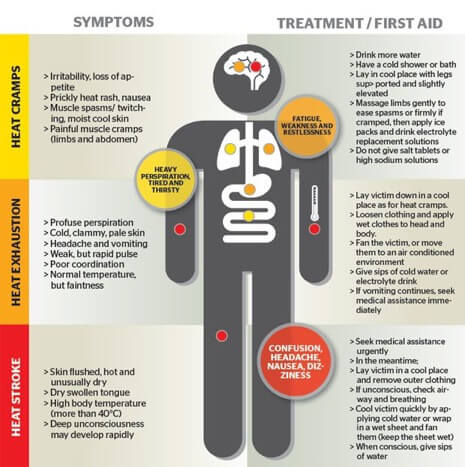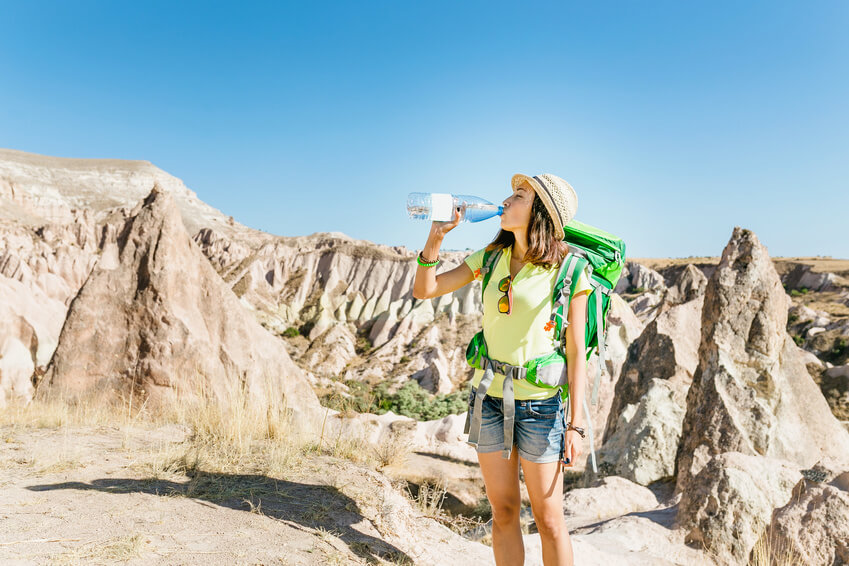Utah summers are hot. It is never safe to leave a toddler, disabled person, or a pet in a car. Cars heat up very quickly. Heat-related illnesses cause hundreds of fatalities each year mostly in the elderly, but children and adults are also vulnerable. Seek the shade. Stay well hydrated. Drink plenty of fluids, particularly water. It’s easy to get dehydrated in the sun, especially when one is active and sweating.
Here’s how to recognize and respond to heat-related illnesses (Courtesy of the Red Cross)

Heat cramps are muscular pains and spasms that usually occur in the legs or abdomen. Heat cramps are often an early sign that the body is having trouble with the heat. Treatment includes getting the person to a cooler place and having him or her rest in a comfortable position. Lightly stretch the affected muscles and gently massage the sore areas. Give an electrolyte-containing fluid, such as a commercial sports drink, fruit juice or milk. Water may also be given. Salt tablets are not recommended.
Heat exhaustion is a more severe condition than heat cramps. Signs of heat exhaustion include cool, moist, pale, ashen or flushed skin; headache; nausea; dizziness; weakness; and exhaustion. Treatment involves moving the person to a cooler environment with circulating air. Removing or loosening clothing and applying cool, wet compresses or towels to the skin. Fanning or spraying the person with water can also help. If the person is conscious and able to swallow, give small amounts of a cool liquid such as a commercial sports drink or fruit juice to restore fluids and electrolytes. Milk or water may also be given. Give about 4 ounces of fluid every 15 minutes. If the person’s condition does not improve or if he or she refuses water, has a change in mental status, or vomits, call 9-1-1 or the local emergency number.
Heatstroke is a life-threatening condition that usually occurs by ignoring the signals of heat exhaustion. Heatstroke develops when the body systems are overwhelmed by heat and begin to stop functioning. Signs of heatstroke include extremely high body temperature, red skin which may be dry or moist; changes in mental status; rapid, weak pulse; rapid, shallow breathing; confusion; vomiting; and seizures. Heatstroke is life-threatening. Call 9-1-1 or the local emergency number immediately.
Treatment involves rapidly cooling the body by immersing the person up to the neck in cold water, if possible OR dousing or spraying the person with cold water. Sponging the person with ice water-doused towels over the entire body, frequently rotating the cold, wet towels, and covering the person with bags of ice. If you are not able to measure and monitor the person’s temperature, apply rapid cooling methods for 20 minutes or until the person’s condition improves. Fortunately, heat-related illnesses can be avoided using common sense.



